Die by the Blade: Bushido Foundations
The Bushido spirit lies within
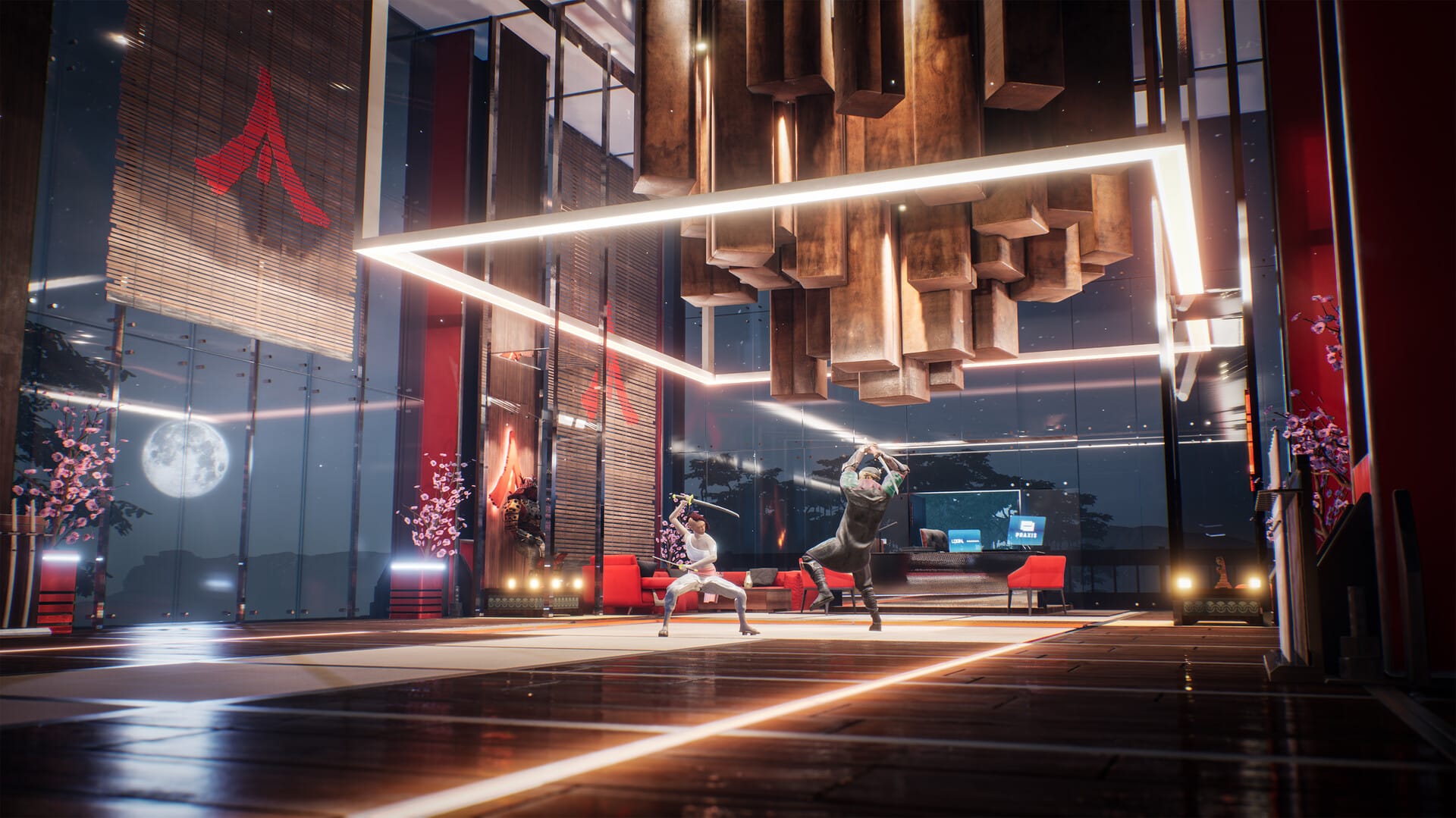
As Dr Doofenschmirtz famously said: "If I had a nickel for every Samurai-themed one-hit-kill fighting game that's been released recently I'd have two nickels, which isn't a lot but it's weird that it's happened twice, right?" (This is a paraphrased quote.)
One half of this Doofenschmirtzian dyad is Die by the Blade, a joint project between Slovakian studios Grindstone Games and Triple Hill Interactive. The game has been in development for about five years, funded by a small but devoted following that helped raise over $25,000 on Kickstarter. Despite its "indie" status, Die by the Blade has chosen to forgo the indie games' usual stylised visuals in favour of realistic-looking graphics and animations.
The Bushido Way
Now if a realistic 3D arena fighter about Samurai dueling to the death sounds familiar, the old souls out there can probably still hear the pulsing techno intro of 90s cult hit Bushido Blade on the original PlayStation.
Source: YouTube.
From general framework to combat mechanics, the indelible splatterings of Bushido Blade are felt all over this spiritual successor. Even Bushido Blade's most iconic feature, the Body Damage system (a mechanic that replaced health bars with the ability for the player character to lose limbs if hit in the extremities, or die outright to a well-placed hit) was intended to be recreated in Die By the Blade. It was later simplified, leading to the game's current system of one-hit kills, but it shows the extent to which Grindstone wanted to modernise Bushido Blade's DNA.
Continuing that trend, and drawing directly from Bushido Blade, Die by the Blade has a collection of 5 different weapons that can be equipped onto the cast of 7 characters. The weapons all have different move sets and ranges, while the characters possess differing stats like speed and stamina. This customisability allows players to find a combination of weapons and characters that suit their playstyle.
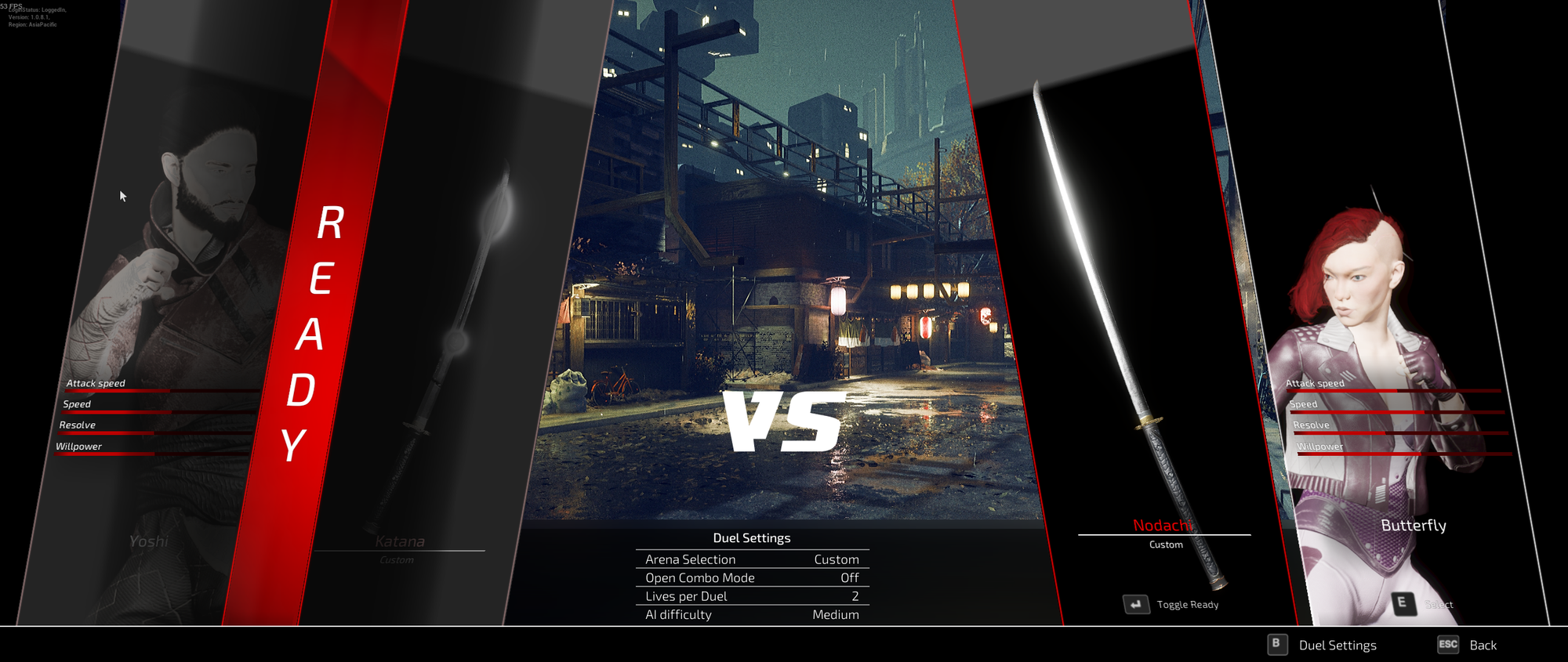
I started my review with the Early Access version, and in the time I spent with the game, the full version was released to market. In the demo, only two weapons and two characters were available with the rest unlocked through in-game currency, but in the full version, all the characters and weapons are available to use. Other unlockables include character and weapon skins, and other cosmetic options such as taunts and banners. The in-game currency can gained through just playing matches, so there's no need to spend real money.
As far as the matches go, the variety is fairly limited in that there is no story mode. The only solo modes currently are duels against the AI, and even when cranked up to the highest difficulty, it still doesn't offer up enough of a challenge to be engaging. Die by the Blade does offer a local multiplayer mode, but the bulk of the game's fun will be found online.
The standard match format is a duel where both players have two lives, but the game does allow the number of "lives" to be customised in hosted duels. The only other format is a tournament mode, where a pool of players fight and the winners match up until only one champion remains. As there's little variety in game modes, Die by the Blade is a game that will live and die by the entertainment of its combat.
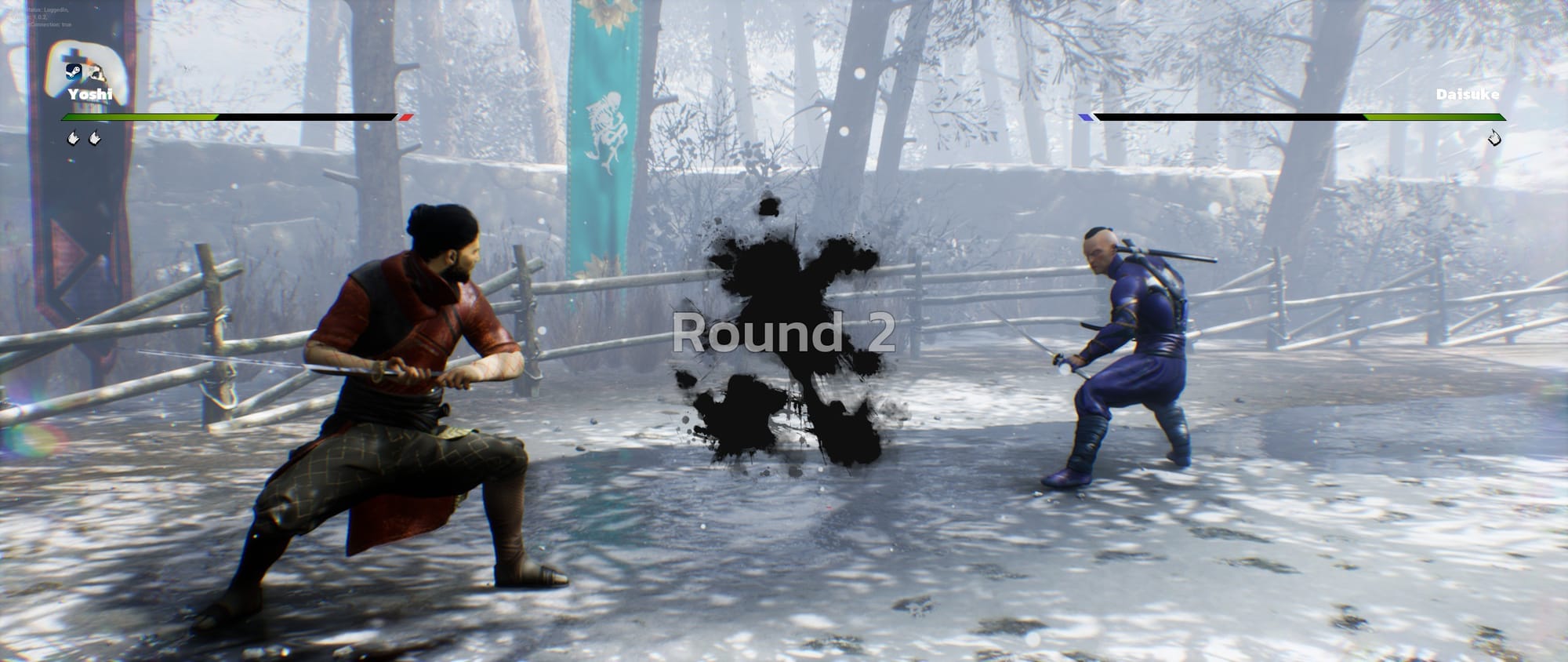
Try to Hit Me
Utilising the same stance system as Bushido Blade, combat is based on three stances: High, Medium, and Low. Combined with two attack types, horizontal and vertical, attack sequences are inputted via a combination of being in the right stance, a directional input, and an attack input. This gives each weapon a total of 6 different attacks.
Every attack sequence is comprised of three strikes, each requiring a separate input, with the final attack being an "Execute". These can't be blocked by regular means and also play a flashy cinematic cutscene if they land.
The control scheme, however, is something that players may find unnatural upon picking up the game. Attacks are inputted with WASD, mouse movement, and a left or right click. On a controller, both the left and right sticks are needed as well as the bumpers. Using the right stick for inputs instead of moving the camera had me fighting against years of muscle memory and definitely requires a bit of an adjustment period.
This novel inputs system is, mechanically, fairly easy to execute—once you get over the control scheme—allowing players to play the game at a competent level quickly. This design decision is reminiscent of Street Fighter 6's modern controls, encouraging new players and removing a lot of the frustration of executing moves found in classic fighting games.
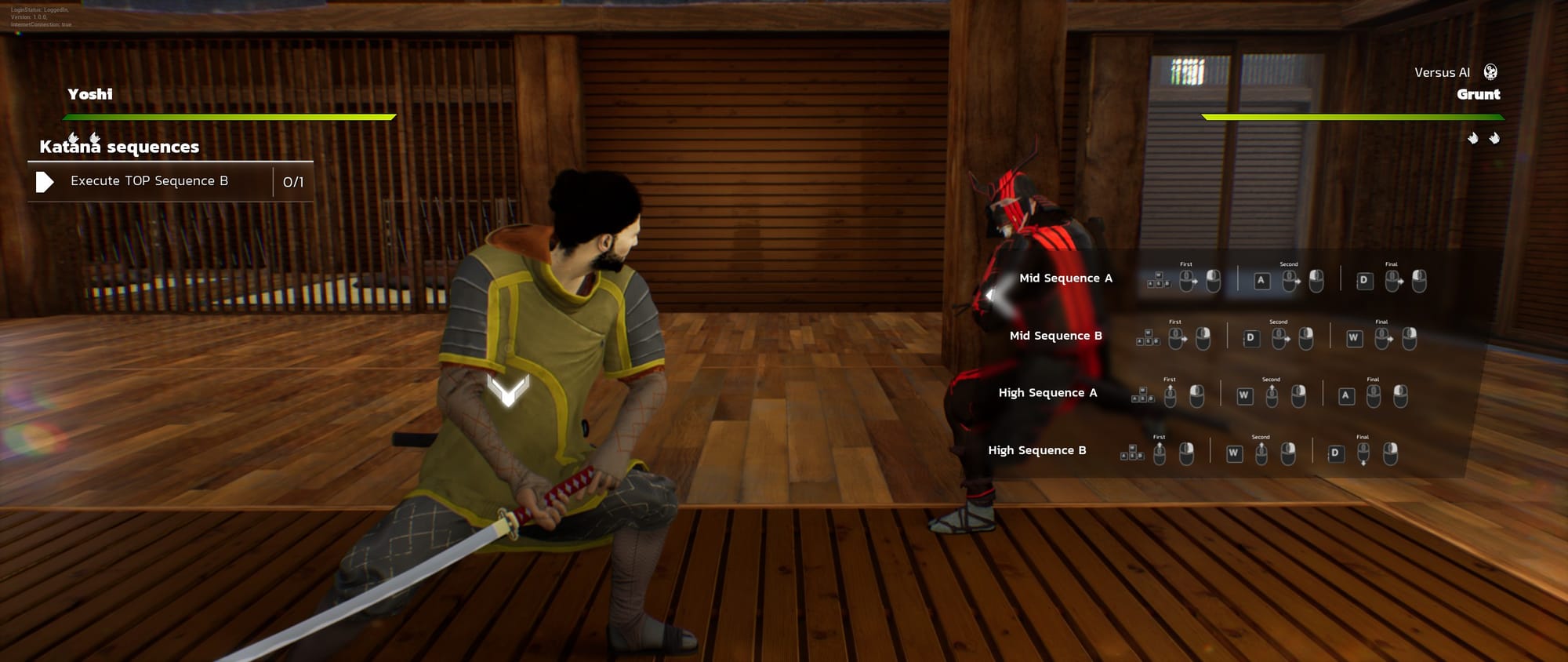
In response, blocking is fairly easy to do and gives players plenty of options to counter a furious offence. Players can "Stance Block" by matching their stance to the direction of their opponent's attack or "Parry" by pressing the block button as the enemy attack is about to land. Parries maintain stamina while Stance Block does not. Doing both together results in a "Perfect Parry", which briefly staggers the opponent and can block "Execute" finishers that would otherwise go through a regular block.
Players are also given access to a few movement options, namely a short dodge and a dash/roll. These change the character's hit box meaning you can roll under high attacks for some cool outplays. Attacking and dashing, however, cost stamina which recharges after a short delay similar to Souls games. This stops people from spamming attacks and playing "Keep Out" footsies. Attack sequences generally cost more than half your stamina bar (depending on the character) to execute, meaning that they're often the best way to overwhelm your opponent on offence, but can't be used back-to-back.
This gameplay style gives the fight the palpable sensation of a real duel. The stamina requirement forces fights to have an ebb and flow as one side waits to recover stamina and plays defensive as the other attacks and vice versa. I found this a great alternative to the frame advantage-driven concept of "Turns". There is a lot of backing out, circling, and tense slow approaches into some fast exchanges, similar to some of the best Samurai duels on the silver screen.
Source: YouTube.
This is the Way
Visually, the stages and character models are detailed but the stages do feel a bit static. In contrast, the attack animations are dynamic and gorgeous, with Grindstone employing motion capture to replicate real-life martial arts techniques. When you land a hit, the big spray of blood and the occasional flying limb makes the kill feel damn satisfying. The cinematic executions are also extravagant and always fun to watch, even if it's your character being slaughtered.
The game's UI is simple but also very effective at conveying essential information. A quick glance is all that is required to see both players' stances, whether an attack is coming or if someone is parrying. With each match potentially over in a moment, a glance is really all you have time for.
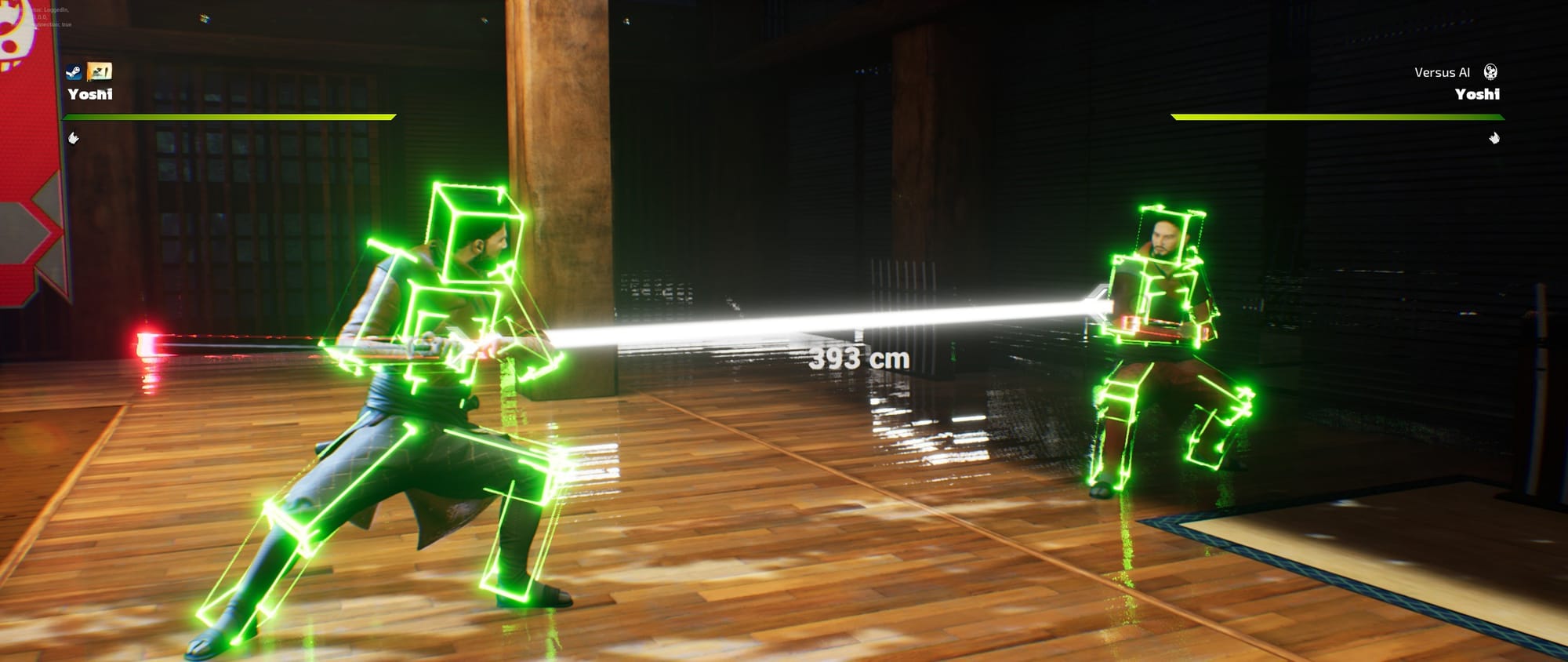
This novel inputs system is, mechanically, fairly easy to execute—once you get over the control scheme—allowing players to play the game at a competent level quickly.
Die by the Blade really wants to be taken seriously as a fighting game, and this desire can be felt even in its practice mode. This mode is quite robust, and loaded with many tools like a hitbox toggle, input history and even range between characters. This desire to be seen as a serious fighter is a double-edged sword, however. While tools are provided by the game, the combat still feels a little undercooked.
Firstly, the game never shows any frame data. It relies primarily on spacing, but attack timing is especially frustrating as certain moves are noticeably slower than others. The specific problem lies in the fact that this selection of slower moves seems arbitrary. In other fighters, there is a trade-off for a slower move; they can reach further, deal more damage, etc. In Die by the Blade, there doesn't seem to be any upside to using a slower attack, even for throwing off opponent timing, as the parry window is fairly generous.
Apart from variations in timing, attacks and sequences also cause the player to move by varying degrees, changing their effective range. Some sequences even lunge at the opponent which, despite being telegraphed, I found was an easy way to catch players off guard.
As such, other sequences felt unnecessary. Realistically I only used about two sequences and two-to-three attacks per weapon to reasonable success during the demo; one fast sequence to pressure from close, and a few attacks and sequences to close distance from afar.
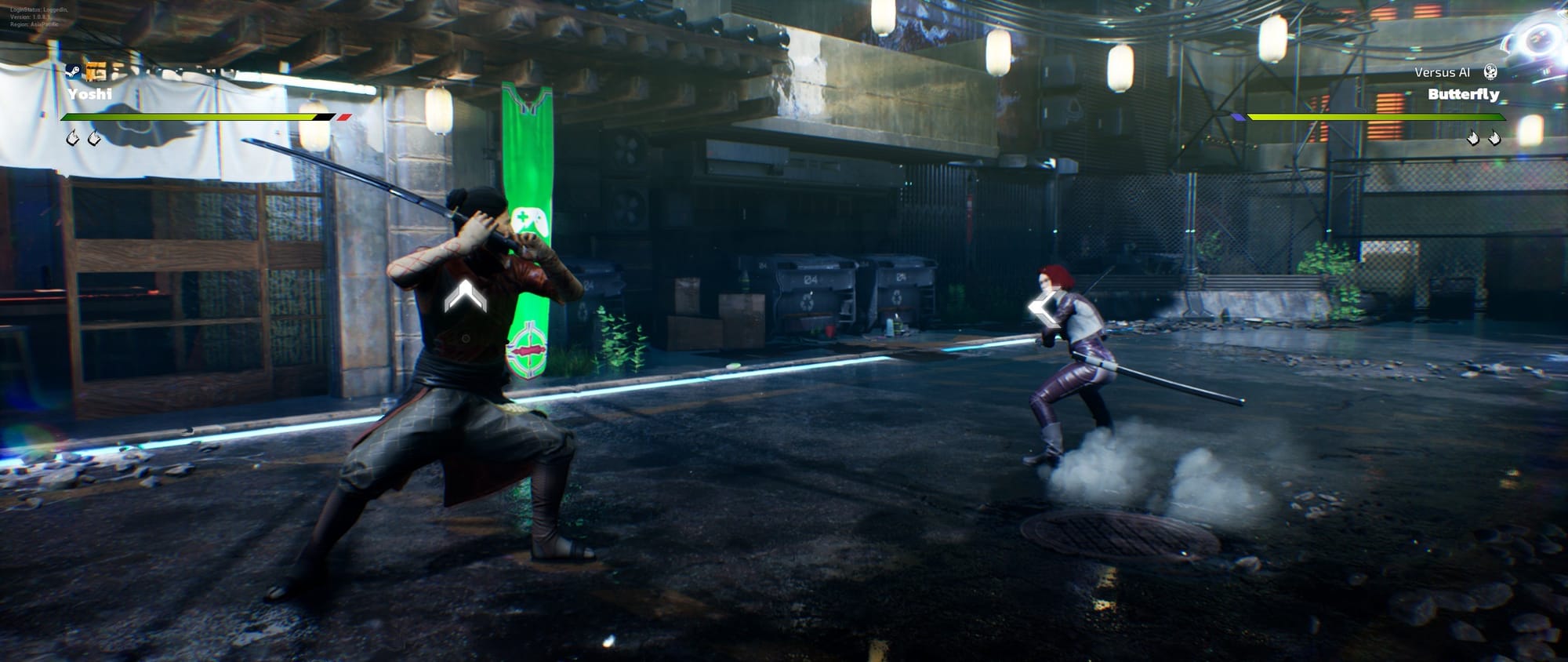
Die By the Blade's defence system also has a few hitches. The ease of execution means that players can quickly reach competency on defence too. Stance switching can be buffered and simply happens too quickly, meaning that for the most part, a player mindful of defence will never really be caught out, even with a feint mechanic in the game. There are no throws, knockdowns, or real mixups outside of said feint that force a decision on the defender, so defence tends to be broken by a fault of execution or lapse in attention.
Kills are most often achieved through footsies, timing, or surprise: an opponent whiffs an attack and gets counter-attacked, a player challenges another's attack and whoever's attack has the faster startup wins, or players simply don't think they're in range of an attack and get tagged. Gameplay quickly began to skew toward far-ranging moves and fast moves, as they were neutral skips that were also very effective at minimising the counter-attack and 'mine's faster' types of losses.
Dashing seemed the most useful movement tech, as dash-rolling allows for a fast slash at the end. This Rolling Slash was arguably the most effective (read: cheesed) attack throughout the entire demo. It covered a large distance, and most importantly, was extremely fast and hard to react to. I was able to slip it in between random engages in matches and found that it was more often than not a good Hail Mary.
The dodge could also be used for a quick side step, but I found it fairly redundant as just blocking was safer and more consistent since, in a fighter like this, getting clipped by an attack loses the round instead of just eating a combo.
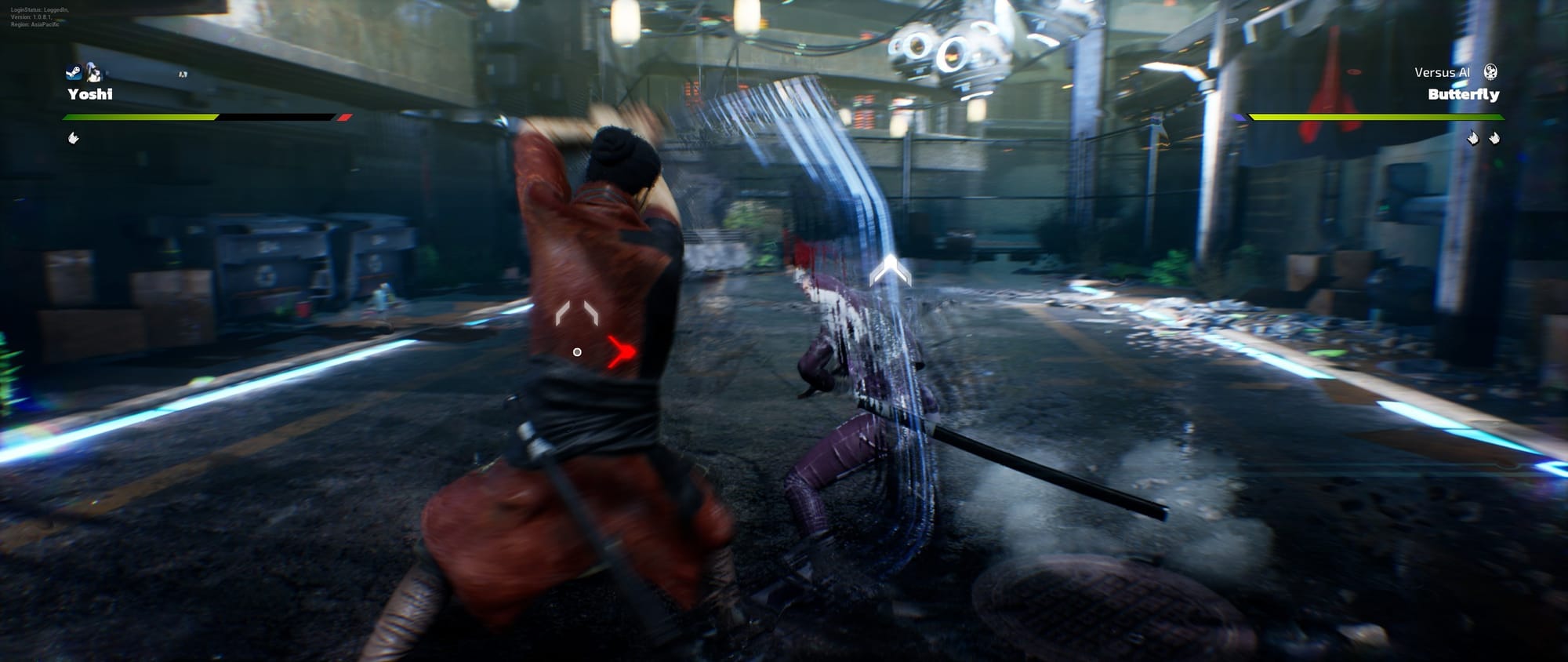
This desire to be seen as a serious fighter is a double-edged sword, however. While tools are provided by the game, the combat still feels a little undercooked.
The Search for Truth
Put simply, Die by the Blade's lean combat system is its greatest strength, making it easy to pick up and play. That is also its biggest problem since it wants to be taken seriously among the fighting game community. The game has a good foundation but the lack of polish means that it's just frustrating as a serious fighter. An example of this outside of the combat is the camera, which I found occasionally lagged behind after a roll attack or dash.
Even the weapons system tends to detract a bit from the game's competitive nature. Especially in a one-hit kill fighter, the longer-range weapons like the Naginata and Nodachi ended up being the meta weapons. The simplicity of the game's combat highlights the lack of content and exposes sticking points, including the homogeneity of the various attacks.
While Bushido Blade also had a similar combat system, it embraced its inherent goofier nature. Being able to turn and run away from your opponent in a Scooby Doo chase scene gave levity to the game. Bushido Blade's unwritten requirement to fight honourably and punish dishonorable actions like attacking the opponent's back provided more rules to the combat, making it fun outside of the combat system. Similarly, other one-hit-kill games like Nidhogg, Divekick, and Sclash also have a fairly simple combat system, but because of the arcadey nature of these games, they don't need to rely on the robustness of their combat to have fun.
I'm one of those fighting game players who enjoys climbing the insurmountable mountain of fighting game competency; from game knowledge to execution, there is always something to work on. This is perhaps why I feel like Die by the Blade doesn't grab me competitively. As a fighting game, it's just too flowchartable. There isn't enough information available, or the system simply isn't deep enough, to make each action measured. During my time with the game, it felt like both parties were just throwing moves out, and that structured neutral was just playing around lunge attacks. In fairness, that could also be because all the players are fairly new, so I'm quite interested to see what high-level gameplay looks like as the game develops more.
While there are a fair few criticisms of Die By the Blade so far, there is also a lot of potential. Many of the issues mentioned in this review can be fixed through rebalancing and patches. Grindstone Games have shown themselves to be very active in addressing problems in the game. During the demo, I found the practice room's layout was much too spread out, making it a pain to navigate. In the very next update, this issue was remedied.
Furthermore, the game has been updated since the demo to include things like a proper elo system in the ranked mode and a rebalancing of some of the attacks such as the problematic roll attack, showing a proper commitment to the competitive side of the game. Grindstone seems to be aware of the weaknesses of their game and is listening to the community.
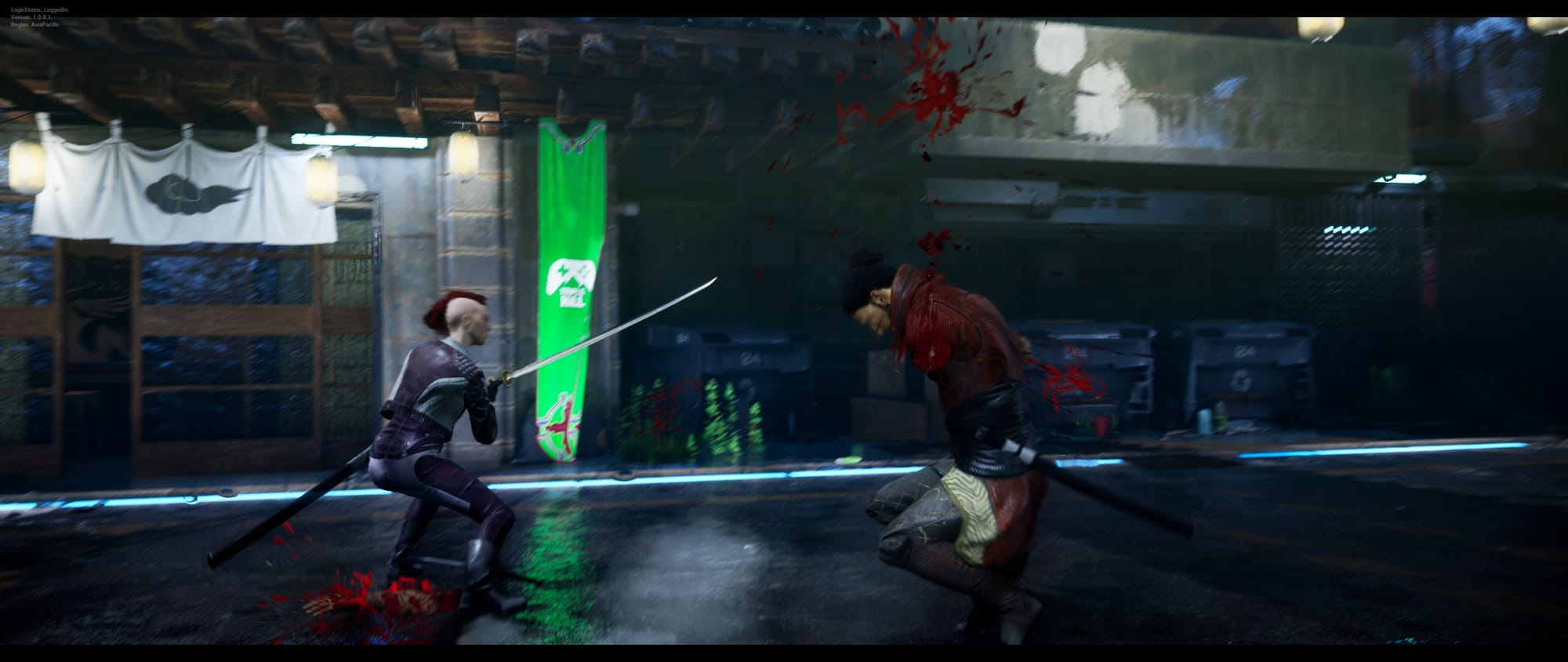
What Die by the Blade has presented currently is a foundation. As a serious fighting game, the mechanics have a solid base to tweak and refine into a decent competitive fighter, but currently, it's not quite at that level. Compounding on that is a lack of variety and content to justify a full-price purchase. There is fun to be had, but outside of getting familiar with the various weapons, the game definitely lacks staying power.
As a local multiplayer party game, however, there is actually a lot of potential for fun. The one-hit-kill nature of the game means that cheese moves and close kills that would be frustrating in a competitive setting become funny amongst friends. The visually spectacular and gory execution kills can also serve as teasing fuel, and the simplicity of the game lends itself to a pickup-and-play setting. If Grindstone embraces this side of Die by the Blade, they could find themselves with a fighter that can be enjoyed in a variety of ways, but in its current incarnation, the game fails to strike a chord.
